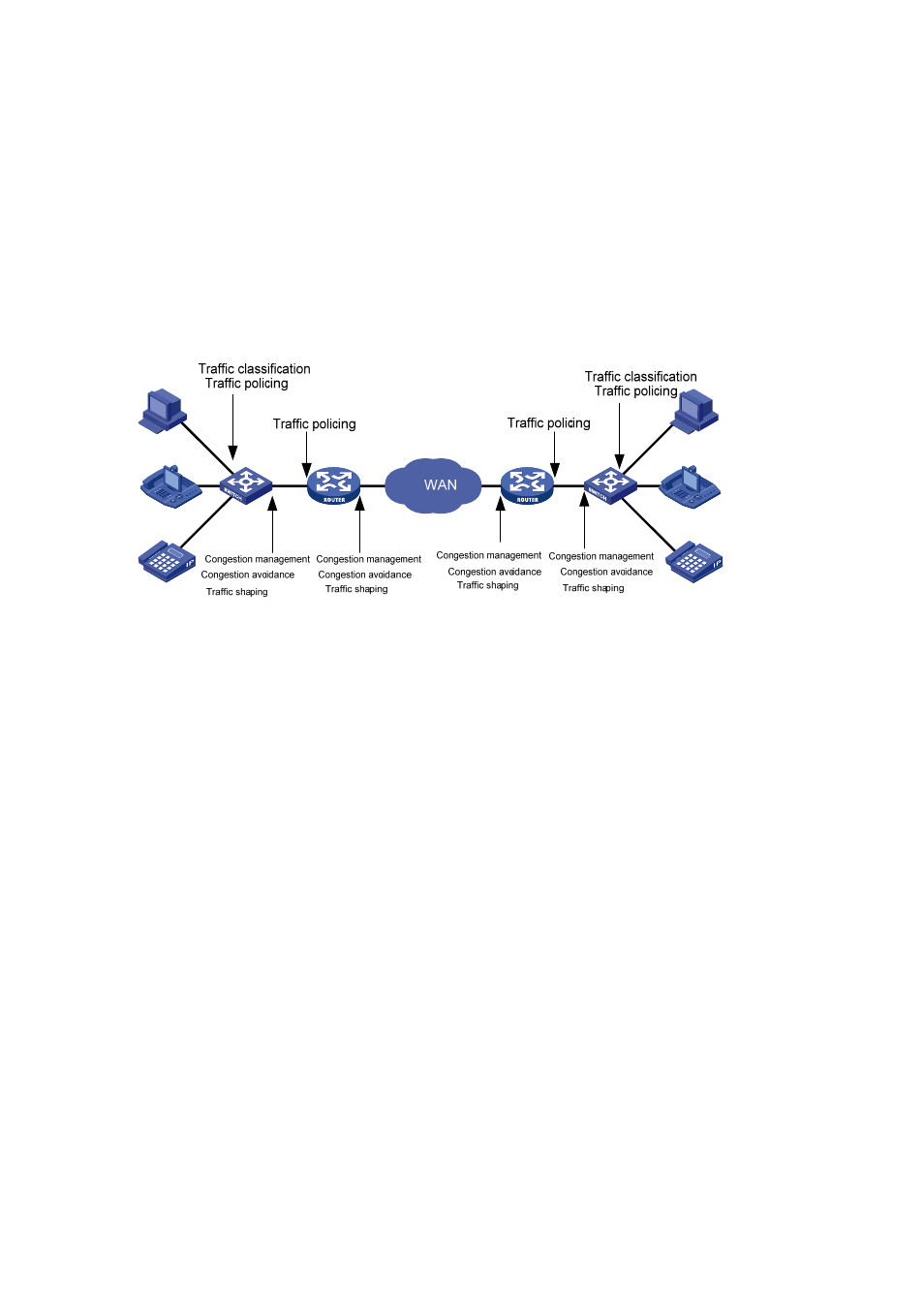Major traffic control techniques – H3C Technologies H3C S3600 Series Switches User Manual
Page 732

1-2
and VoD. As for other applications, such as transaction processing and Telnet, although bandwidth is
not as critical, a too long delay may cause unexpected results. That is, they need to get serviced in time
even if congestion occurs.
Newly emerging applications demand higher service performance from IP networks. In addition to
simply delivering packets to their destinations, better network services are demanded, such as
allocating dedicated bandwidth, reducing packet loss ratio, avoiding congestion, regulating network
traffic, and setting priority of the packets. To meet those requirements, the network should be provided
with better service capability.
Major Traffic Control Techniques
Figure 1-1 End-to-end QoS model
As shown in the figure above, traffic classification, traffic policing, traffic shaping, congestion
management, and congestion avoidance are the foundations for a network to provide differentiated
services. They are described as follow:
z
Traffic classification identifies traffic based on certain matching rules. It is a prerequisite for
differentiated services and is usually applied in the inbound direction of a port.
z
Traffic policing confines traffic to a specific specification and is usually applied in the inbound
direction of a port. You can configure restriction or penalty measures against the exceeding traffic
to protect carrier benefits and network resources.
z
Traffic shaping adapts output traffic rate usually to the input capability of the receiving device to
avoid packet drop and port congestion. Traffic shaping is usually applied in the outbound direction
of a port.
z
Congestion management handles resource competition during network congestion. Generally, it
adds packets to queues first, and then forwards the packets by using a scheduling algorithm.
Congestion management is usually applied in the outbound direction of a port.
z
Congestion avoidance monitors the use of network resources and drops packets actively when
congestion reaches certain degree. It relieves network load by adjusting traffics. Congestion
avoidance is usually applied in the outbound direction of a port.
Traffic classification is the basis of all the above-mentioned traffic management technologies. It
identifies packets using certain rules and makes differentiated services possible. Traffic policing, traffic
shaping, congestion management, and congestion avoidance are methods for implementing network
traffic control and network resource management. They are occurrences of differentiated services.
